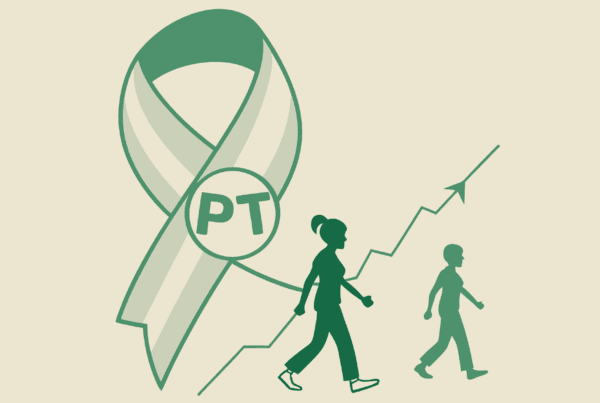Selling your Interventional Pain practice in Nevada presents a significant opportunity. A strong national market, combined with Nevada’s specific physician demand, creates a favorable environment for sellers. However, capitalizing on this moment requires understanding your practice’s true value and navigating the sale process correctly. This guide offers insights into the market, key buyer considerations, and how to prepare for a successful transition.
Market Overview
The timing for selling an Interventional Pain practice is influenced by forces at both the national and state level. Together, they create a compelling climate for Nevada practice owners.
A Growing National Market
The demand for pain management is robust and expanding. The global market is valued at over $78 billion and is projected to grow steadily. This national tailwind means that well-run practices are not just a local service but part of a highly attractive healthcare sector for investors and strategic buyers. It signals stability and long-term potential, which are two things buyers pay a premium for.
The Nevada Advantage
Locally, Nevada presents a unique opportunity. The state has a well-documented shortage of physicians, ranking near the bottom nationally for doctors per capita. For an established Interventional Pain practice, this isn’t a negative. It’s a significant advantage. It means your practice serves a vital need in an underserved market, making it more valuable to buyers looking for immediate impact and a strong patient base from day one.
Key Considerations
Beyond the market, buyers look closely at the operational details of your practice. A favorable payer mix, such as one weighted towards PPO and Medicare, signals financial stability. Your staffing model is also critical. A practice that isn’t entirely dependent on the owner and has skilled support staff, like a nurse practitioner, is seen as a more turnkey operation. Finally, your assets, from the C-Arm and fluoroscopy table to your EMR system, are not just equipment. They are foundational elements of the practice’s value. Presenting these details clearly is a key part of demonstrating the strength and readiness of your business for a transition.
Market Activity
The Nevada market is not just active; it’s attracting sophisticated buyers, including private equity groups and larger healthcare organizations. These groups are looking for specific qualities as they build regional or national platforms. Understanding what they want is the first step to positioning your practice for a premium valuation.
Here are three qualities that are attracting buyers to Nevada pain practices today:
- A Stable, Profitable Foundation. Buyers are looking for practices with a history of consistent collections and healthy earnings. A practice in the Reno-Tahoe area, for instance, with around $1.2M in annual collections and $600K in discretionary earnings, represents an ideal acquisition target.
- A Story of Growth. A practice that is performing well is good. A practice that has a clear path to grow is even better. This could be the potential to add another provider, introduce new ancillary services, or expand into a neighboring community. We help you frame this story for buyers.
- A Smooth Transition Pathway. Sophisticated buyers want to see a business that can run efficiently post-sale. A well-defined team, efficient workflows, and a physician-owner willing to stay for a transition period all make your practice a much more attractive, lower-risk investment.
The Sale Process
Selling your practice is a process, not a single event. It starts long before a buyer is at the table. We often see owners think about selling only when they are ready to retire, but the best outcomes happen when you start preparing 2-3 years in advance. The journey typically begins with a confidential valuation to understand your practice’s market worth. From there, we prepare a marketing package that tells your practice’s story and present it confidentially to a vetted pool of potential buyers. After negotiations, you enter due diligence. This is the stage where a buyer verifies every detail of your practice, from financials to compliance. It is the most common point where deals fall apart, but with proper preparation, it can be a smooth confirmation of the value you’ve built.
Valuation: What Is Your Practice Really Worth?
A practice’s value is not just its revenue. Sophisticated buyers determine value using a metric called Adjusted EBITDA (Earnings Before Interest, Taxes, Depreciation, and Amortization). This starts with your net income and adds back owner-specific perks and non-recurring expenses to find the true cash flow of the business. That Adjusted EBITDA figure is then multiplied by a number (a multiple) that reflects your practice’s quality, risk, and growth potential. A practice with under $500K in EBITDA might receive a 3x-5x multiple, while a practice with over $1M can command a 5.5x-7.5x multiple or higher.
Many factors can push your multiple to the higher end of the range.
| Factor | Lower Multiple | Higher Multiple |
|---|---|---|
| Provider Model | 100% owner-dependent | Associate-driven, multiple providers |
| Payer Mix | High concentration of Medicaid | Strong PPO and Medicare mix |
| Geography | Saturated urban market | Underserved area (like much of Nevada) |
| Growth Story | Stable, but flat revenue | Clear path to add services or locations |
Getting this calculation right is the foundation of a successful sale. A one-off offer from a local competitor rarely reflects the full value a structured process can achieve.
Post-Sale Considerations
The day the deal closes is not the end of the story. It is the beginning of your next chapter. Thinking about what that looks like is a critical part of the sale process itself. How will you ensure your staff is taken care of? How will your legacy of patient care continue? These are questions that should be addressed in the deal structure. For many physicians, a sale doesn’t mean walking away. It can involve retaining equity in the new, larger company (an equity rollover), giving you a “second bite of the apple” when that company sells again. For others, it involves an earnout structure that rewards you for continued performance. The right structure depends entirely on your personal and financial goals, and it must be negotiated from a position of strength.
Frequently Asked Questions
What makes Nevada a unique market for selling an Interventional Pain practice?
Nevada has a well-documented shortage of physicians, ranking near the bottom nationally for doctors per capita. This creates a significant advantage for an established Interventional Pain practice because it serves a vital need in an underserved market, making it more valuable to buyers looking for an immediate patient base and impact.
What key operational factors do buyers consider when purchasing an Interventional Pain practice?
Buyers look for a favorable payer mix, preferably weighted towards PPO and Medicare, as it signals financial stability. They also value a staffing model that is not entirely dependent on the owner, with skilled support staff such as nurse practitioners. Additionally, having valuable assets like C-Arm, fluoroscopy table, and a robust EMR system is important for the practice’s value.
How is the value of an Interventional Pain practice typically determined?
The value is primarily based on Adjusted EBITDA (Earnings Before Interest, Taxes, Depreciation, and Amortization), which accounts for net income plus adjustments like owner perks and non-recurring expenses. This figure is then multiplied by a multiple that reflects the practice’s quality, risk, and growth potential. Practices with higher EBITDA and strong growth potential can command higher multiples, ranging from about 3x-7.5x.
What qualities are attracting sophisticated buyers to Nevada pain practices?
Buyers are attracted to practices that have a stable, profitable foundation with consistent collections and healthy earnings, a story of growth with potential for expansion or additional services, and a smooth transition pathway with efficient workflows and a physician-owner willing to stay for a transition period.
What are important considerations after selling an Interventional Pain practice?
Post-sale considerations include planning for the staff’s care and maintaining the legacy of patient care. Some sellers may retain equity in the new company (equity rollover) or enter into an earnout structure based on continued performance. The deal structure should be aligned with your personal and financial goals and negotiated from a position of strength.



